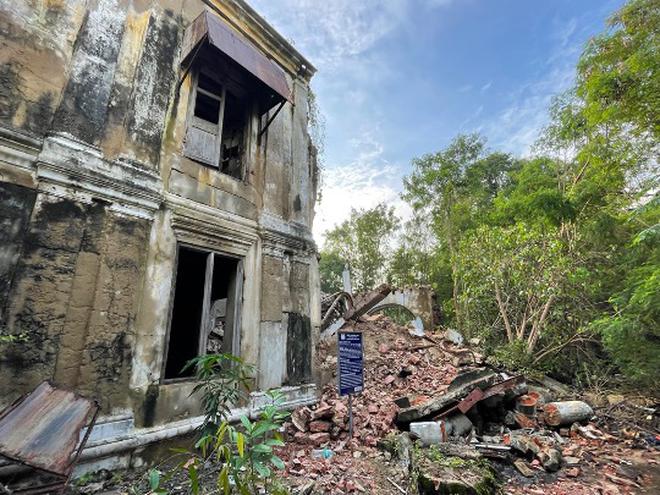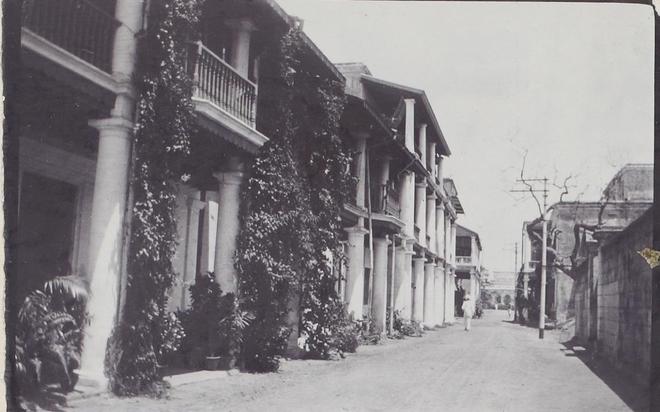

Last House on Snob’s Alley was a go-to place for me, each time I visited Fort St George. Located at the south-eastern extreme of the Fort, the official name of the thoroughfare on which it stood was St Thomas’ Street. It was an aristocratic quarter of Fort St George, facing as it did the east and being always subject to sea breeze. Perhaps because of this, the street came to be known as Snob’s Alley. The name however appears to have been of 20th century origin for no old book on the Fort, including HD Love’s Vestiges of Old Madras mentions it. The first reference I have seen to Snob’s Alley is in Lt Col. DM Reid’s The Story of Fort St George and that dates to 1945.
Last House, which stood at the extreme southern end of this street was a historic landmark. It was one of the oldest buildings in the Fort. In DM Reid’s time it was still a sturdy structure, as is evident by a sketch by Ismena Warren who did the illustrations for the book. Reid also provides a description of the building itself – “Look inside and see the fine carved staircase which goes up to the second storey. It might well be in any building in the Middle Temple in London.” By the time I became familiar with the place in the 1990s, the staircase had gone but the rest of the building remained intact.
It was one of the structures in the Fort that was under the protection of the Archaeological Survey of India. Right up to 2015 or so, you could walk up to Last House, go into it, come out on the other side, which was the eastern face of the Fort and even gaze over the ramparts on to Rajaji Salai. And from the road you got a fine view of the building as well, standing as it did in the open, with no obstructions in front.
There was a subtle change thereafter. The paved open space surrounding it was neglected, allowing plants to grow, and making access difficult. The portico on the western front of the building vanished. We were unofficially informed that the ASI had withdrawn protection to the structure for reasons unknown. It was denied even basic maintenance. A part of it collapsed in the rains of the 2021 and this year Cyclone Michaung did the rest. Last House joins a long list of buildings that have vanished or collapsed inside the Fort. The first to go was the whole of Portuguese Square, a set of buildings once protected by the ASI and later de-notified to permit the construction of Namakkal Kavignar Maligai. Welleley’s House collapsed in the 1990s. The so-called Clive’s Library is standing only because of the tree that envelops it, with the Navy dawdling over its restoration. King’s Barracks is also on its last legs, with the Army doing nothing about it. At this rate, the Fort will soon have nothing but the Church, the Museum and the ASI’s office to showcase as history, apart from the Assembly & Secretariat.
It is very easy to dismiss the Fort as colonial legacy but in my view, the past, no matter how unpleasant it is, has to be preserved to showcase what it was. As for the ASI it needs to explain why it neglected Last House to the point of collapse. Is it part of a larger plan to get rid of unwanted buildings to provide more space to new constructions? My photographs alongside show how the building declined over decades.
(V. Sriram is a writer and a historian.)







